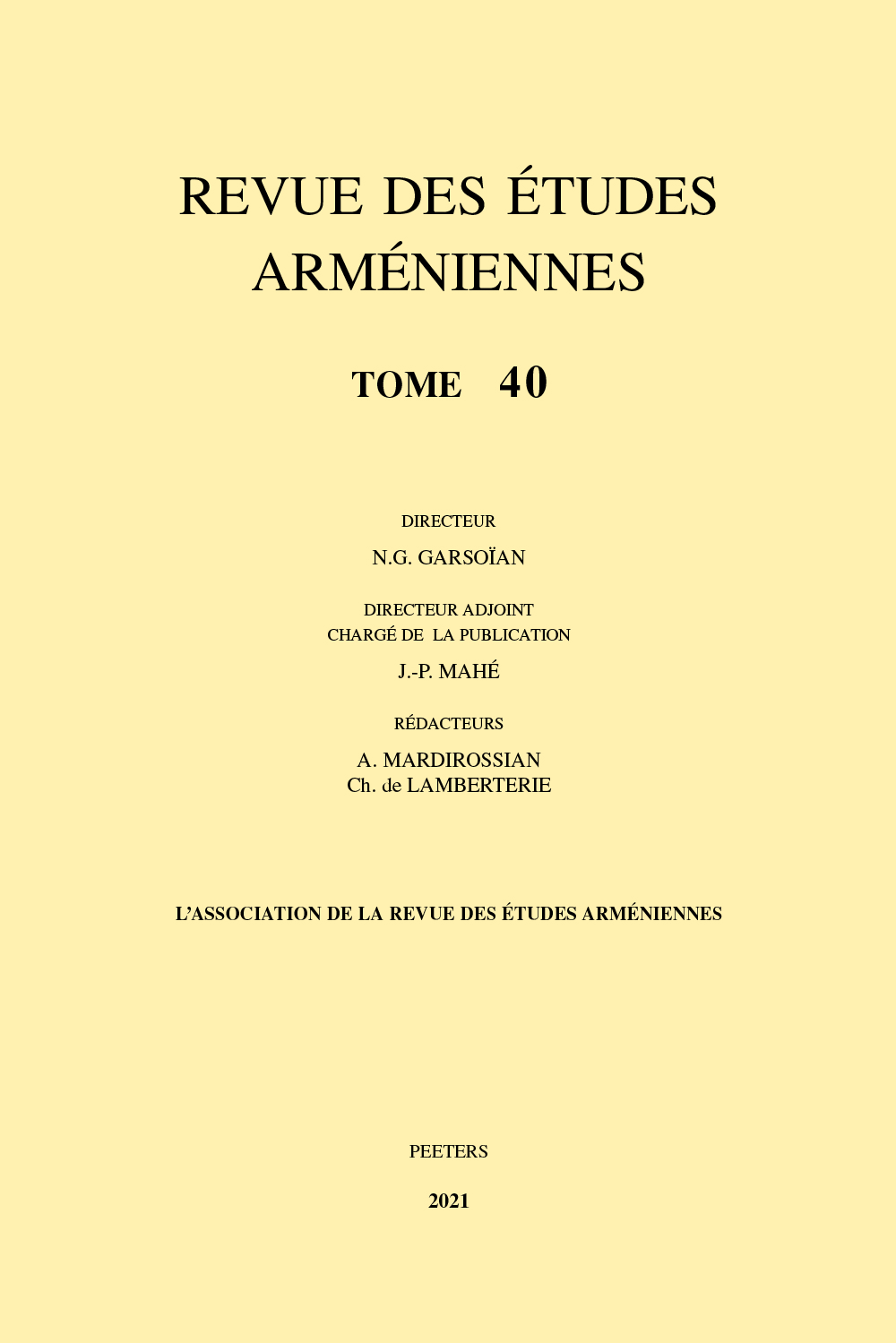 previous article in this issue previous article in this issue | next article in this issue  |

Preview first page |
Document Details : Title: The Administrative Policy of the Islamic (Arab) Caliphate in the Christian Lands of Greater-Armenia, Caucasian Albania, and Iberia Author(s): SHAHINYAN, Arsen K. Journal: Revue des Études Arméniennes Volume: 40 Date: 2021 Pages: 33-64 DOI: 10.2143/REA.40.0.3290108 Abstract : The aim of this article is to specify the territory of the Arab vilayet of Armīnīya (8th–9th c.) and its frontiers with its neighboring two vilayets of ḏarbayǧān and al-Ǧazīra, as well as the Arab bordering region with Byzantium aṯ-Ṯuġūr. The task is to determine the administrative affiliation of the non-Muslim lands of Greater-Armenia, Caucasian Albania, and Iberia under the late Umayyads (661–750) and early ‘Abbasids (750–1258). As the result the author refutes the long-standing view in Middle Eastern studies that this vilayet consisted of four administrative units. He argues that it had a tripartite division: Armīnīya I, which incorporated 113 Greater-Armenian gavaṙs; Armīnīya II, i.e. Arrān, which, besides all Albanian lands on the left bank of the Kura, incorporated three Greater-Armenian ašxarhes in the northeast, located on the right bank of this river; and finally Armīnīya III, i.e. Ǧurzān, which, besides all Iberian lands, incorporated one Greater-Armenian ašxarh in the north. The author also determines for the first time in Armenian and Caucasian studies the areas of whole Armīnīya and its three administrative unites and argues that the Greater-Armenian former periphery in the south, as well as ancient Armenian Mesopotamia, formed a part of al-Ǧazīra, and its former periphery in the southwest, as well as the southern regions of Lesser Armenia were part of Mesopotamian border region. Finally, the Greater-Armenian former periphery in the southeast was integrated by the Arab authorities into ḏarbayǧān, but the indigenous Armenian population continued to remain there as the major ethnic group. |
|


